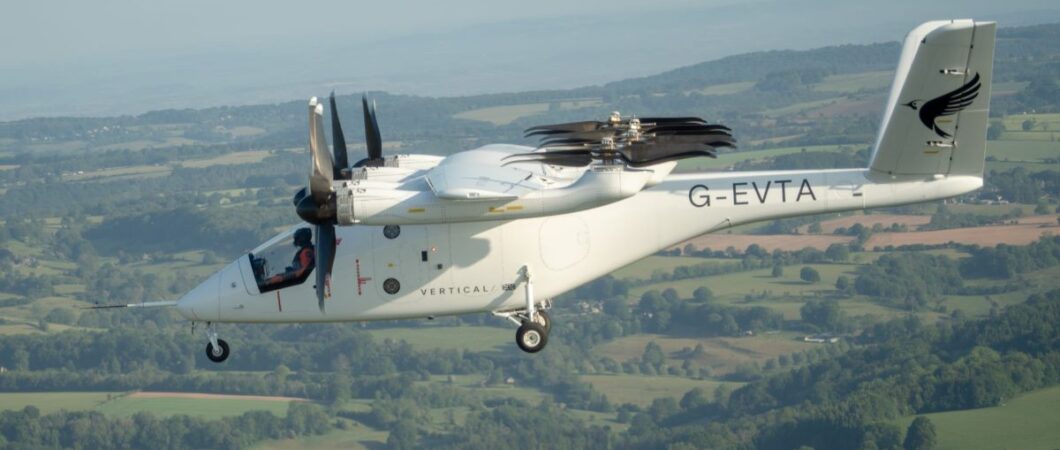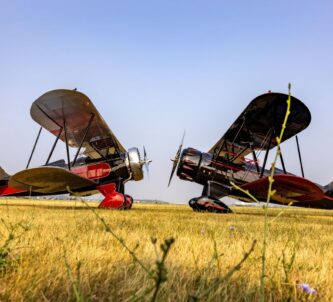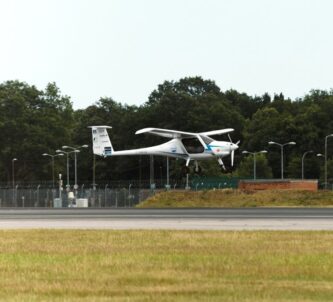Vertical Aerospace, last week, reached a landmark in the development of their VX4 eVTOL, by making the first-ever piloted wingborne flight of a winged eVTOL in European open airspace.
Electric Vertical Take-Off and Landing (eVTOL) aircraft developers around the world are edging nearer and nearer to fully licensed Advanced Air Mobility (AAM) commercial operations, and for Vertical Aerospace, this is a major step.
The UK Civil Aviation Authority (CAA) pre-approved the flight through open airspace at Cotswold Airport, which was piloted by Chief Test Pilot Si Davies. The VX4 prototype took-off, flew, and then landed like a conventional aircraft, with lift generated by the wing.
Simon Davies said: “Taking the aircraft beyond the airfield and cruising over the Cotswolds for the first time was truly special and a career highlight for me. Our performance predictions were absolutely spot on, and the aircraft took off as a natural extension of all the ground tests and preparation we’ve done.
This flight was Phase 3 in Vertical’s piloted flight test programme…
- Phase 1: Tethered: the VX4 prototype will perform stabilised hover while loosely tethered to the ground COMPLETE 12 September 2024.
- Phase 2: Thrustborne: the VX4 prototype will take-off and land vertically and conduct low speed flight manoeuvres with lift generated by the propellers COMPLETE 4 February 2025.
- Phase 3: Wingborne: the VX4 prototype will take-off, fly and land like a conventional aircraft, with lift generated by the wing. COMMENCED 22 May 2025.
- Phase 4: Transition: The VX4 prototype will transition between thrustborne and wingborne flight, and vice versa. Expected before YE 2025.
The purpose of the wingborne phase is to test the lift parameters of the wing This is the flight mode that enables low-power, quiet, and range-efficient flight, which is what makes electric air travel practical, scalable, and economically viable. During the wingborne flight phase, the VX4 will reach speeds of up to 150 mph (120 knots) and altitudes close to 2,000 ft under real-world conditions.







